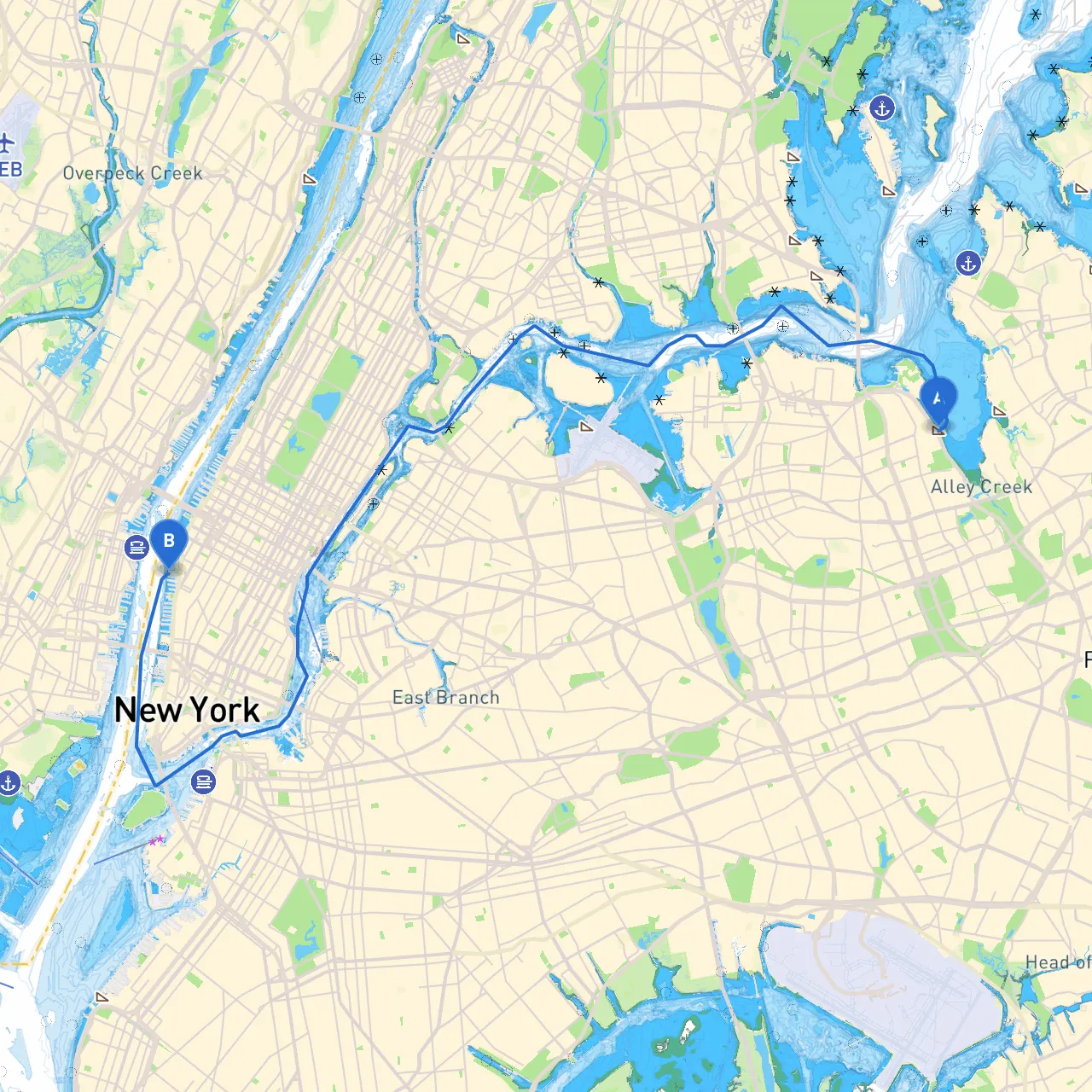

Pilotage Plan: Bayside, NY to New York, NY
Route Overview:Embarking on this journey from Bayside, NY to New York City is a delightful passage that combines urban excitement and breathtaking scenery. This route traverses the vibrant waterways of the New York City metropolitan area, offering plenty of opportunities for both sight-seeing and safe anchorage should inclement weather challenge your voyage.
Starting Point: Bayside, NYBayside serves as a tranquil harbor with easy access to the open waters. Before leaving, it’s good to familiarize yourself with the local marina facilities, which often include fuel stocks, supplies, and restrooms.
Segment 1: Leaving BaysideAs you exit Bayside, set your course southeast along Little Neck Bay. The waters here are relatively sheltered, but be vigilant of local boat traffic, especially during weekends when recreational boating peaks. It's advisable to keep your cruising speed moderate, allowing for quick responses to changing conditions.
Navigational Aids:
Notable Landmarks:
Segment 2: Moving Towards the East RiverThe next stage takes you south towards the East River. As you approach the bridge at the Throgs Neck, stay clear of the shipping lanes and keep an eye out for vessels navigating in and out of the busy Port of New York and New Jersey.
Sheltering Bays:
Segment 3: Navigating the East RiverAs you continue south through the East River, you will navigate a bustling waterway, surrounded by the iconic city skyline. Maintain a lookout for larger ferries and commercial vessels.
Important Navigational Considerations:
Points of Interest:
Arriving in New York HarborAs you approach the southern part of the East River, you'll notice the towering structures of Lower Manhattan. This area witnesses high traffic density, so reduce speed and maintain a diligent lookout.
Final Approach and Safety Considerations:
End Point: New York, NYArriving in New York City’s harbor is a rewarding conclusion to your journey. You can navigate through various docking options available at marinas like Downtown Manhattan Boathouse or Hudson River Park.
Safety Tips for the Boater:
This route is perfect for the recreational boater looking to experience the thriving spirit of New York City while navigating safely through its storied waterways. With stunning views, historical landmarks, and options for sheltered bays, it's a voyage to remember—but always prioritize safety over fun.